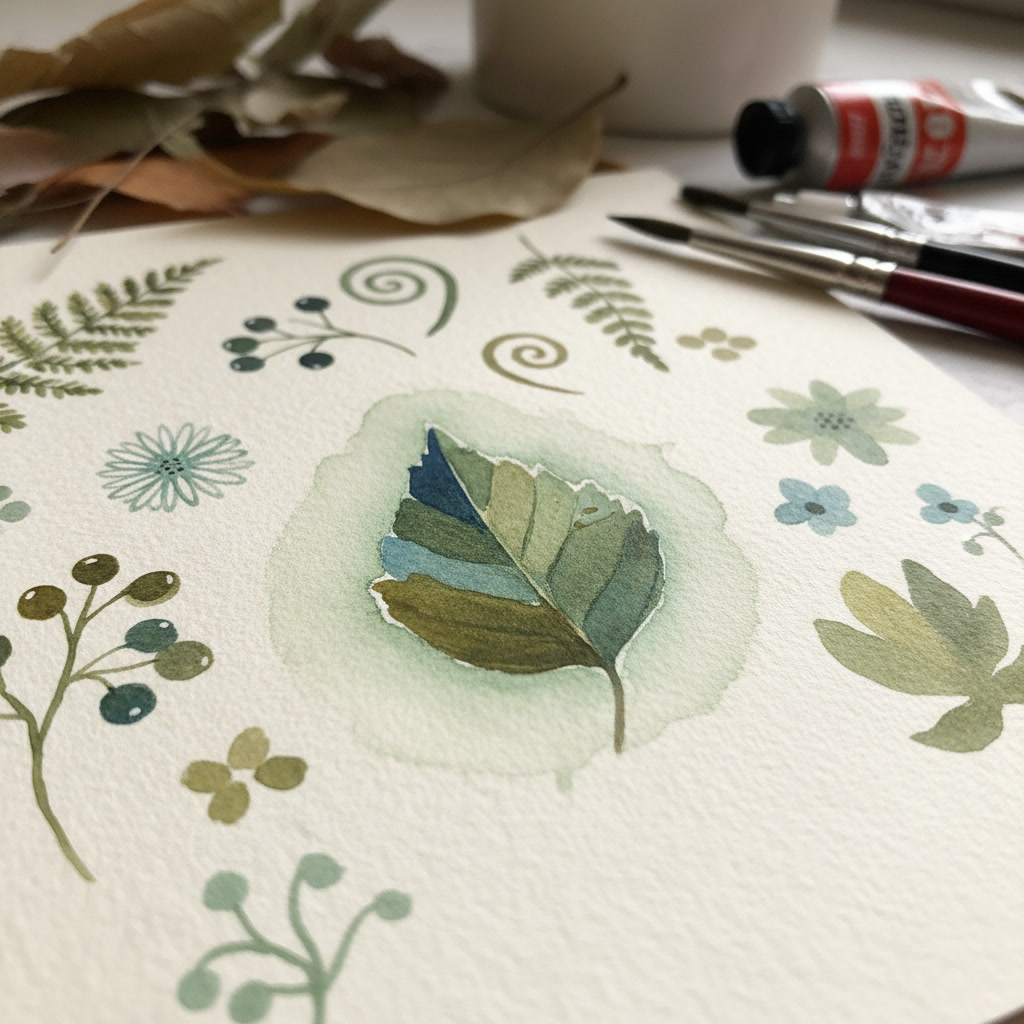Every collection begins with an idea that feels intangible — a word, a memory, a mood. Our work at Lily & Inc Studio is to give that idea weight, texture, and life. Translating a concept into a physical textile is an act of both discipline and intuition — a dance between philosophy and fiber.
We often describe our process as "thinking through the hand." It's how we move from an abstract design narrative into something you can touch. Every weave, every surface decision, carries the trace of that transformation.
Where Design Philosophy Meets Material
Our conceptual textile design process starts with discussion — long conversations around our studio table about meaning, emotion, and story. We rarely begin with pattern sketches. Instead, we start with language.
What is the feeling behind the concept? Is it light or grounded? Fast or slow? Expansive or intimate? These questions shape the path forward more than any visual reference.
For example, when we developed our Stillness Collection, the guiding idea was "quiet luxury." Translating that meant selecting materials that carried visual restraint — washed silks, soft matte finishes, and pale natural tones that absorbed light rather than reflected it.
The philosophy was silence. The fabric became its voice.


The Art of Design Translation
Design translation is both a creative and technical skill — bridging concept and craft. Here's how we approach it:
1. Define the Emotional Core.
We write a short paragraph that captures the central emotion of the concept. For "Stillness," it read: "A moment of pause; the texture of breath." This sets the tone for every later decision.
2. Collect Material Resonance.
We touch dozens of fabrics — not looking for beauty, but alignment. Which textures evoke the same emotional quality? We often find our direction through one surprising material that "feels like the idea."
3. Visualize Through Imperfection.
We resist the urge to make ideas too neat too early. Concepts evolve through irregular testing — brushing, dyeing, layering. The first drafts of fabric are never perfect, but they hold truth.
4. Edit With Purpose.
We refine, reduce, and simplify until only what's essential remains. The goal is to let the material speak without explanation.
This cycle repeats for every project, from conceptual textile design to final production.
Material as Narrative
Every fabric tells a story — our job is to help it say what words cannot. In many ways, we treat materials like characters: some bold, others quiet; some transparent, others secretive.
For instance, in our Botanical Motifs collection, the concept began as "nature's handwriting." We studied how stems curve, how leaves repeat in rhythm, and how those natural marks could translate into woven form. The final prints captured not literal plants but the gesture of growth.
This is what we call narrative weaving — letting the philosophy of nature guide the hand of design.


Bridging Abstraction and Touch
One of the hardest parts of our process is knowing when to leave the world of ideas and enter the world of making. Philosophy is limitless; fabric is not. Translating thought into tangible design requires boundaries — and that's where mastery lives.
In our studio, this moment is sacred. The screens go dark, the notebooks close, and the tools come out: thread, pigment, brushes, needles. What begins as language transforms through repetition, error, and intuition. The physical act of creating anchors the idea in reality.
By the end, the concept isn't gone — it's embedded in texture.
The Role of Experimentation in Conceptual Textile Design
Experimentation is how we discover new languages of material. We layer paint on rough jute, print digital motifs onto unfinished silk, or distress cotton until it looks like a watercolor. These experiments often produce what we call accidental truths — outcomes that feel more honest than anything we could plan.
In our Imperfect Forms series, for instance, we explored the beauty of disruption — printing precise geometric motifs on fabrics intentionally wrinkled and folded. The tension between control and chaos became the essence of the work.
This is how philosophy turns tactile — through trial, error, and the courage to leave space for surprise.
Story as the Spine of Every Collection
Every collection we make begins and ends with story. Without it, design feels empty. We write, sketch, and talk about the story as much as we test swatches.
If the story shifts during production, we let it — because materials have their own voices. A stiff weave may demand simplicity; a fluid silk may suggest movement. Our process is a conversation, not a blueprint.
Ultimately, what connects philosophy to fabric is empathy — understanding what the material wants to express and allowing it to do so.

From Concept to Client — Collaborative Design Narratives
When we collaborate with brands, galleries, or designers, we invite them into our storytelling process. Rather than presenting finished patterns, we show stages of transformation: concept sketches, tactile notes, and material swatches side by side.
Clients often tell us this makes them feel the design more deeply. They see not just the product, but the philosophy that shaped it.
It's a slower, more intentional way to work — but that's where the value lies. Each fabric becomes a record of shared thought.
The Beauty of Tangibility
As a studio, we're obsessed with the moment when thought becomes touch. Watching an abstract idea turn into physical texture still feels like alchemy. No technology can replicate that bridge between brain and hand.
It's why we make textiles — because in fabric, philosophy finds its most human form.
Interested in exploring design translation for your brand or collection?
Work with us



